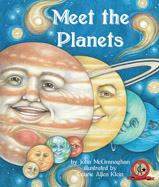Alignment to Standards for GA

| Grade | Number | Standard |
|---|---|---|
| 1 | S1CS4. c | Compare very different sizes, weights, ages (baby/adult), and speeds (fast/slow) of both human made and natural things. |
| 1 | S1CS5. c | Use simple pictographs and bar graphs to communicate data. |
| 2 | S2CS4.d. | Compare very different sizes, weights, ages (baby/adult), and speeds (fast/slow) of both human made and natural things. |
| 2 | S2CS5. c. | Use simple pictographs and bar graphs to communicate data. |
| 2 | S2E1. | Students will understand that stars have different sizes, brightness, and patterns. |
| 2 | S2E2. | Students will investigate the position of sun and moon to show patterns throughout the year. |
| 3 | S3CS4. b. | Use geometric figures, number sequences, graphs, diagrams, sketches, number lines, maps, and stories to represent corresponding features of objects, events, and processes in the real world. |
| 3 | S3CS5.c. | Use numerical data in describing and comparing objects and events. |
| 3 | S3CS7. b. | Some scientific knowledge is very old and yet is still applicable today. |
| 3 | S3CS8.c. | Scientists use technology to increase their power to observe things and to measure and compare things accurately. |
| 4 | S4CS4. b. | Use geometric figures, number sequences, graphs, diagrams, sketches, number lines, maps, and stories to represent corresponding features of objects, events, and processes in the real world. |
| 4 | S4CS4. c. | Identify patterns of change in thingsãusing records, tables, or graphs of measurements where appropriate. Sunrise/moonrise/tide tables (online teaching activities) |
| 4 | S4CS7. b. | Some scientific knowledge is very old and yet is still applicable today. |
| 4 | S4CS8. c. | Scientists use technology to increase their power to observe things and to measure and compare things accurately. |
| 4 | S4E1. | Students will compare and contrast the physical attributes of stars, star patterns, and planets. |
| 4 | S4E1. a. | Recognize the physical attributes of stars in the night sky such as number, size, color and patterns. |
| 4 | S4E1. b. | Compare the similarities and differences of planets to the stars in appearance, position, and number in the night sky. |
| 4 | S4E1. d. | Identify how technology is used to observe distant objects in the sky. |
| 4 | S4E2. | Students will model the position and motion of the earth in the solar system and will explain the role of relative position and motion in determining sequence of the phases of the moon. |
| 4 | S4E2. b. | Explain the sequence of the phases of the moon. |
| 4 | S4E2. d. | Demonstrate the relative size and order from the sun of the planets in the solar system. |
| 5 | S5CS4. b. | Use geometric figures, number sequences, graphs, diagrams, sketches, number lines, maps, and stories to represent corresponding features of objects, events, and processes in the real world. Identify ways in which the representations do not match their ori |
| 5 | S5CS4. c. | Identify patterns of change in thingsãusing records, tables, or graphs of measurements where appropriate. Sunrise/moonrise/tide tables (online teaching activities) |
| 5 | S5CS7. b. | Some scientific knowledge is very old and yet is still applicable today. |
| 5 | S5CS8. c. | Scientists use technology to increase their power to observe things and to measure and compare things accurately. |
| K | SKCS4.c | Compare very different sizes (large/small), ages (parent/baby), speeds (fast/slow), and weights (heavy/light) of both manmade and natural things. |
| K | SKE1. | Students will describe time patterns (such as day to night and night to day) and objects (such as sun, moon, stars) in the day and night sky. |
| K | SKE1. b | Classify objects according to those seen in the day sky (clouds, birds, planes) and those seen in the night sky. |
| K | SKP3. b | Recognize that the sun, moon, and stars are in the sky, but donêt come down. |
| K | SSKH3 f. | Day, week, month, year |